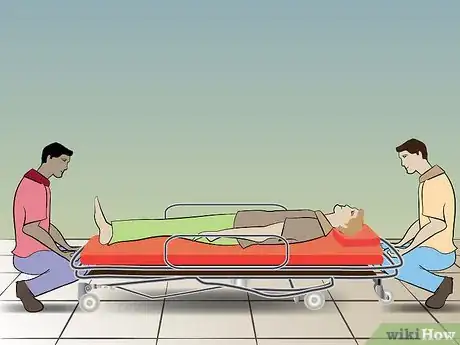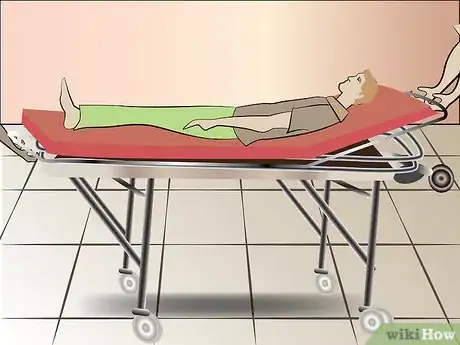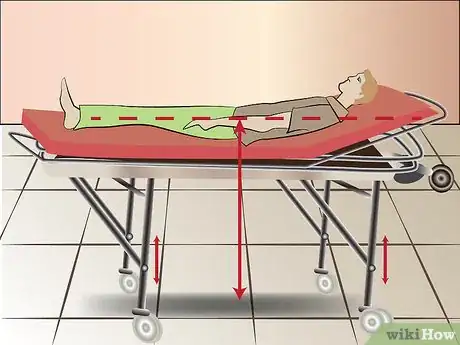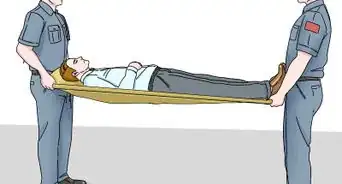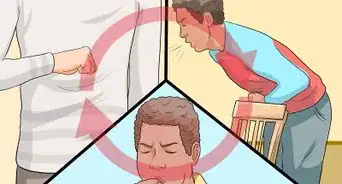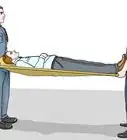X
wikiHow is a “wiki,” similar to Wikipedia, which means that many of our articles are co-written by multiple authors. To create this article, 18 people, some anonymous, worked to edit and improve it over time.
This article has been viewed 45,212 times.
Learn more...
Do you know how to raise and lower an ambulance stretcher? Follow these steps to help you learn this not-so-tricky process.
Steps
-
1Lower the stretcher.
- Look for the handle at the foot end of the stretcher (it can be red or black) which is placed under the mattress. After taking the weight off of the wheels, pull the handle
- Make sure you (and your partner) are ready for the stretcher to come down. This means standing out of its way a little, and preparing to guide the stretcher to the floor. Never lift with your back. Instead, keep your back straight and squat; use the muscles in your legs.
-
2Raise the stretcher.Advertisement
-
3After you (and your partner) are ready, pull the handle under the mattress. once the stretcher is at the desired height, let go of the handle.
-
4Slowly transfer the weight from your arms back to the wheels.
Advertisement
Warnings
- Stretchers are not backboards they are not meant to be carried!⧼thumbs_response⧽
- Only trained EMTs, Paramedics, or other trained emergency responders should operate the stretcher.⧼thumbs_response⧽
- Make sure that you know how to properly lift and to use proper body mechanics when lifting.⧼thumbs_response⧽
- Ambulance stretchers come in many different styles; this is only a general guide so make sure that you know how to operate the stretcher that your ambulance company uses for patient transport.⧼thumbs_response⧽
- Make sure that no arms or legs are caught in the stretcher - this happens a lot when operating by the sides rather than ends. Make sure you are clear of moving parts before you move - it is often difficult to see every one of your partner's digits.⧼thumbs_response⧽
- When lifting and moving a patient that is in the stretcher, communication is important; always make sure that you and your partner know what you are doing and understand what you are doing before you begin to move the patient in any form. Failure to communicate will result in injury/further injury to the patient, injury to yourself, and/or injury to your partner.⧼thumbs_response⧽
Advertisement
Things You'll Need
- Stretcher
About This Article
Advertisement
